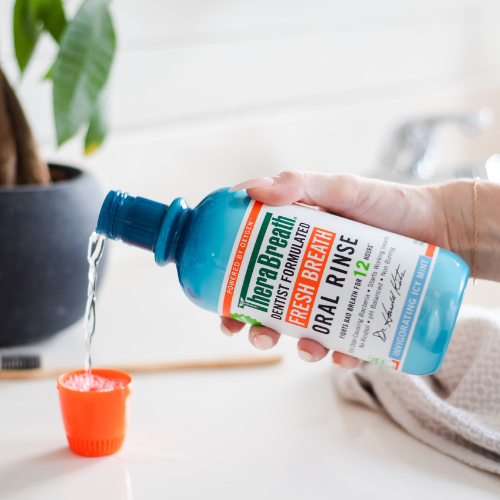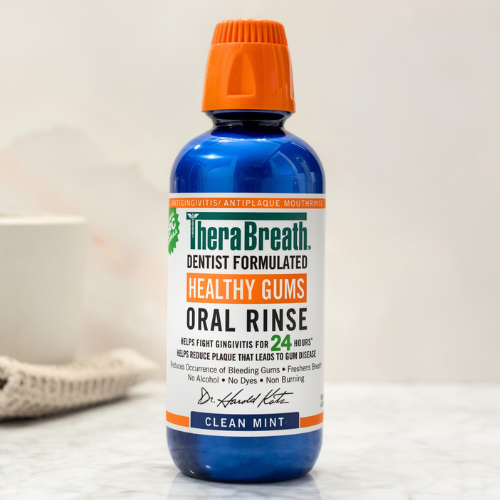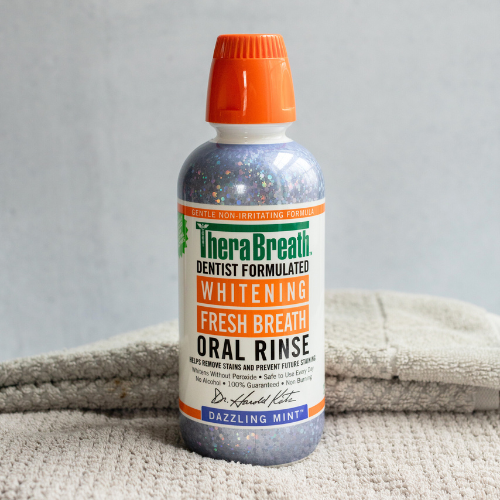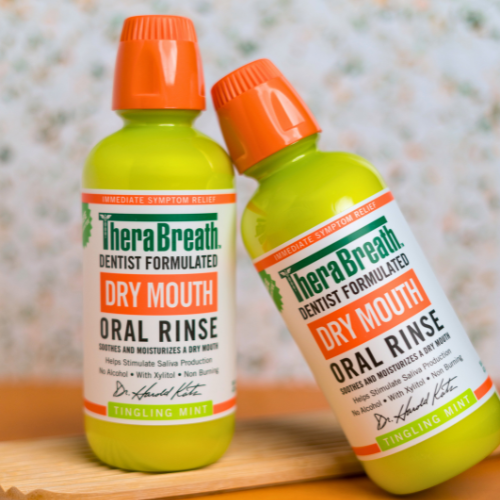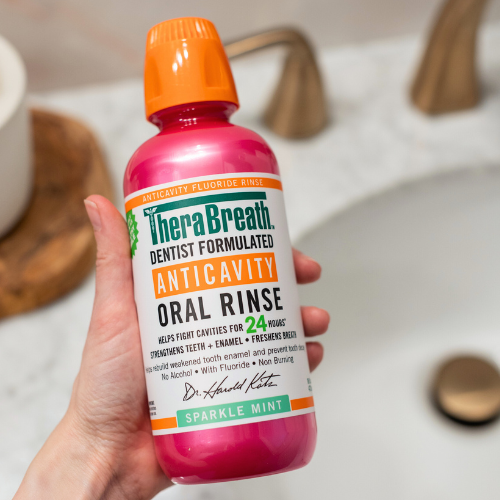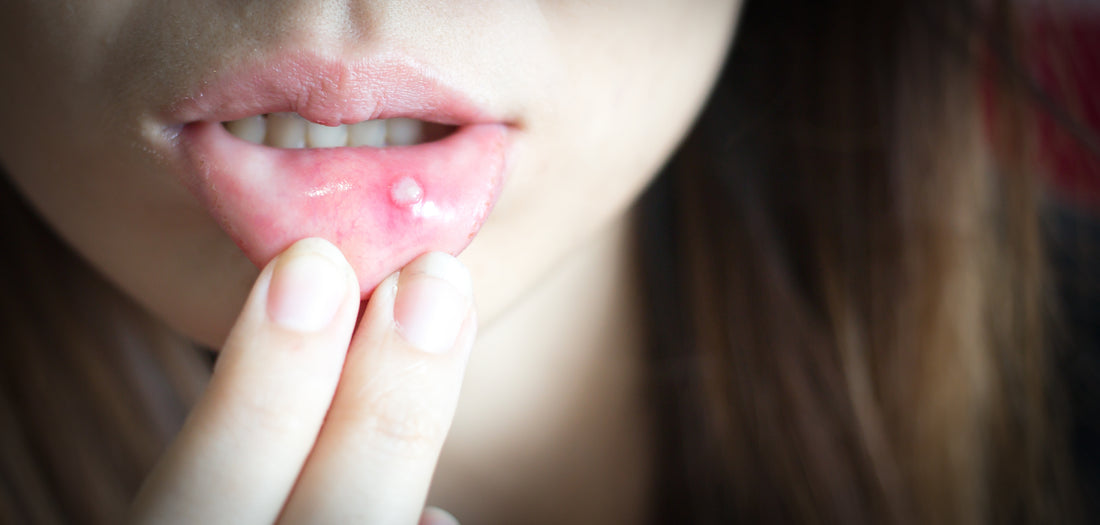
Canker Sore Symptoms, Causes, Solutions, And More
Share

Medically referred to as an aphthous ulcer, a canker sore is a painful mouth lesion that can develop on the inner cheek, inside lower lip, roof of the mouth, or the upper throat. Canker sores are very common, affecting about 20% of the world population. Contrary to what some people believe, they are not contagious, so cannot spread from person to person. The lesions usually occur for the first time in a person between the ages of 10 and 20. Typically, episodes become less frequent and severe as a person ages. Women often report increased susceptibility to their formation during specific times of the menstrual cycle, while others report complete immunity during pregnancy
What Are Canker Sore Symptoms?
A newly formed canker sore is normally preceded by a burning, tingling sensation that eventually develops into a bump felt by the tongue. A canker sore has a white or yellowish center, and when it bursts, a wound with a red border results. Once a sore has burst, it will be painful to the touch, react to hot, cold, and strong beverages and foods, and make eating and drinking very uncomfortable. Commonly, canker sores in the mouth appear one at a time, but they can also appear in small clusters. After you have experienced a lesion, you are more prone to developing recurring lesions in the same location, typically once a year.
Sometimes during an episode, a person may experience swelled lymph nodes that are sore to the touch, a low-grade fever, and extreme sensitivity to hot, spicy, or abrasive foods.
Canker Sore Classification
Canker sores are classified by the lesion diameter. For example, those deemed "minor" are small, measuring less than 10 mm in size, and represent the most common of all types. They are characterized by a whitish-yellow interior that is surrounded by a pale red halo. Ulcers that are predominately white in color tend to cause severe pain and may produce lip swelling when near the mouth.
Aphthous ulcers that are larger than 10 mm in diameter are diagnosed as "major" ulcerations. They are more common in young adults, can take several weeks or more to heal, and may cause scarring on the cheeks, tongue, or lips.
The most severe type of canker sore is the herpetiform ulceration. Women are affected by this type of lesion more often than men, especially in their 20s. Lesions are small, but form large clusters that are difficult to treat. Unlike major lesions, herpetiform ulcerations usually do not cause scarring.
What Are The Underlying Causes of Canker Sores?
Sores occur when the mucus membrane breaks open due to inflammation that experts suspect may emerge when the immune system is compromised by infection or trauma. Experts speculate that they may result from an overreaction to streptococcus bacteria, since the lesions often contain large amounts of this bacteria when tested. Other explanations for the development of canker sores include:
- Eating too many fried, spicy, or hard foods such as potato chips
- Experiencing chronic stress and fatigue from overwork or other life issues
- Food allergies (especially cow's milk)
- Extreme or sudden weight loss
- Deficiencies in folic acid, vitamin B12, zinc, and iron
- Crohn's disease
- Celiac disease
- Brushing hard enough to produce scrapes on the gums and other oral tissues
- Accidentally biting the inside of the mouth
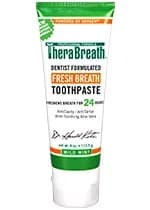
The Role of Sodium Lauryl Sulfate in Canker Sores
Sodium lauryl sulfate (SLS) is a surfactant derived from palm oils. It is added to many hygiene and cleaning products such as laundry soap, because it is excellent for removing stains, oil, and grease from a variety of surfaces. SLS is also an ingredient in many toothpaste brands because of its ability to produce a visible foaming effect when a person brushes. Marketing experts believe the "foaming" action convinces consumers that the product is highly effective.
In a study done at the University of Oslo, Norway, Drs. Barvoll and Brokstad reported a 60-70% reduction in the number of canker sores in patients who used SLS-free toothpaste during the 3-month test period. More recent studies have shown equally promising results.
In the clinical studies, patients using SLS toothpaste displayed a greater amount of desquamation (loss of a layer of skin lining the inside of the mouth). This led to the theory that SLS may contribute to lesion formation by causing injury to the skin cells lining the inside of the mouth.
Dr. Katz Discusses the Connection Between SLS in Toothpaste and Canker Sores
How Do I Prevent Canker Sores?
TheraBreath products including toothpastes and mouthwashes are natural and do not contain SLS, alcohol, benzalkonium chloride, or saccharin. All of these ingredients are ineffective, non-essential, and potentially harmful. TheraBreath toothpastes and oral rinses can help reduce the appearance of canker sores. Further, they contain an exclusive ingredient developed by Dr. Katz called OXYD-8, a stabilized form of chlorine dioxide that eliminates oral bacteria responsible for halitosis, periodontal disease, and dry mouth syndrome. While researchers do not think that anaerobic bacteria are an underlying cause of canker sores, many people suffering from chronic mouth lesions may also have dry mouth and/or bad breath.
How Do I Treat Canker Sores?
Canker sores typically heal on their own, but the pain can last 10 to 14 days. There are several home remedies that can help alleviate pain, however, if the lesions do not respond or heal within two weeks, you should see a doctor.
TheraBreath offers several toothpastes that may help prevent the formation of canker sores, while alleviating bad breath and dry mouth.
